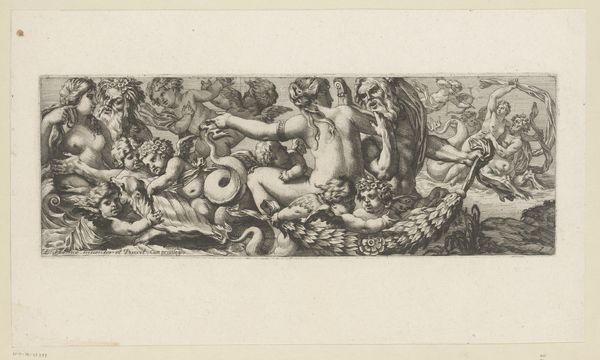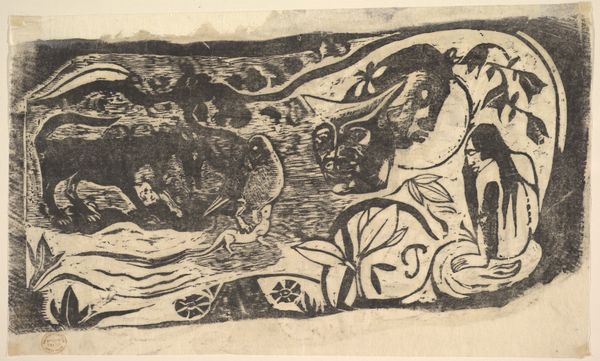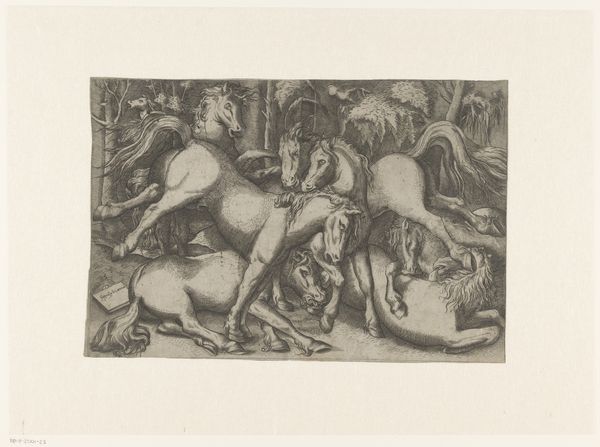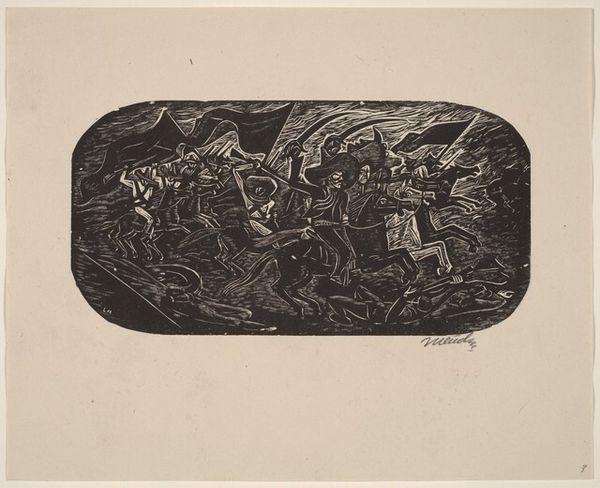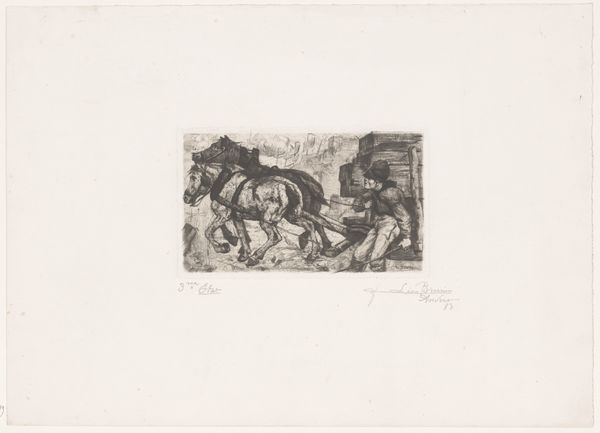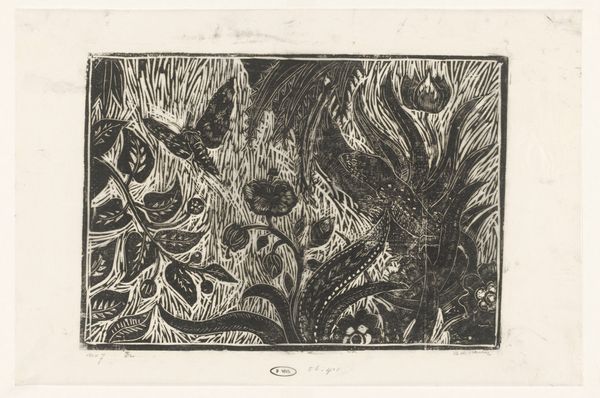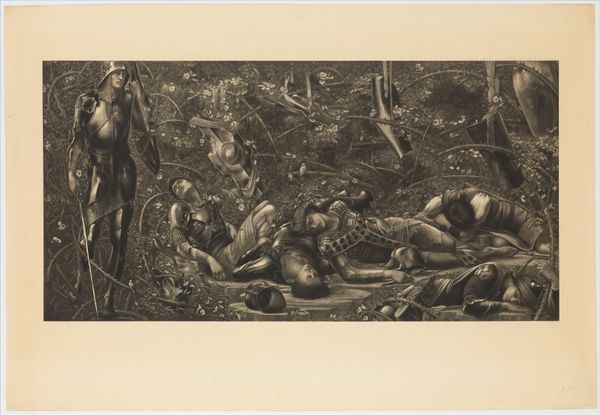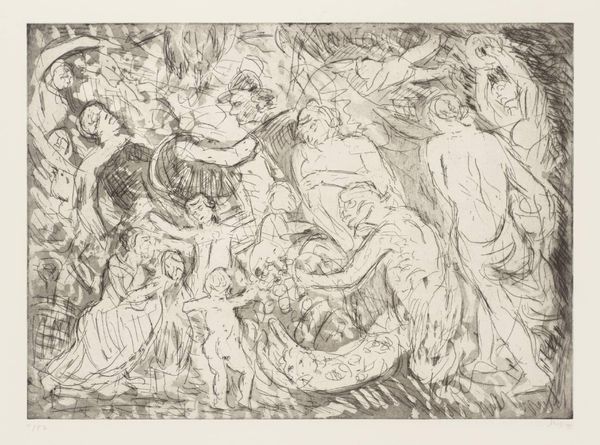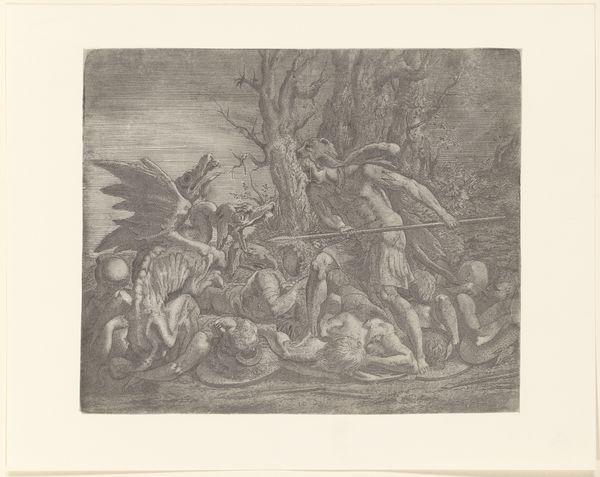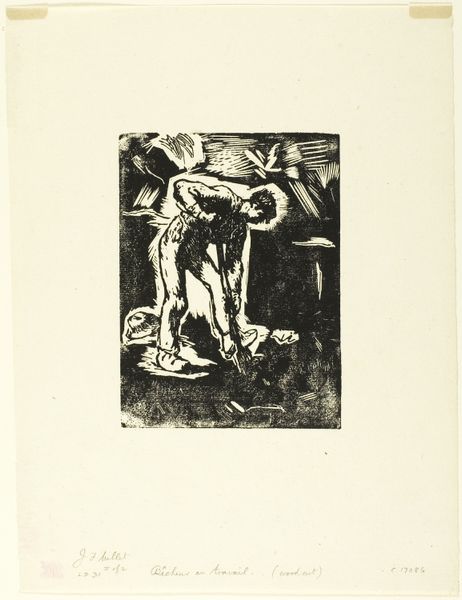
print, woodcut
# print
#
landscape
#
figuration
#
expressionism
#
woodcut
#
sea
Dimensions: height 460 mm, width 608 mm
Copyright: Rijks Museum: Open Domain
Editor: Here we have "De visschers" or "The Fishers," a woodcut print by Johannes Frederik Engelbert ten Klooster, created in 1921. There’s such a dramatic contrast between light and shadow. I'm curious, how do you interpret this work? Curator: What strikes me is how Ten Klooster uses the Expressionist style to portray the struggle of these fishermen, doesn’t it? The distorted figures, the violent waves – they speak to a historical reality, a period of immense social and economic upheaval following the First World War. Editor: Yes, that makes sense. The figures do seem to be wrestling not just with the sea, but with something more. The tension in their bodies. The near-absence of facial features. Curator: Exactly. Consider the position of the working class at this time, caught in the throes of industrial change. These "fishers" can be viewed as symbolic figures embodying a collective struggle against both natural and systemic forces. The Expressionist aesthetic heightens this, doesn't it? Highlighting alienation and the raw realities of human experience. What does the use of woodcut as a medium suggest to you in this context? Editor: Woodcut seems fitting, actually. Its rough, textured lines underscore the harshness of the fishermen’s lives, and the simplification feels symbolic of the struggles faced by laborers across Europe at that time. It brings attention to the materials used in its creation, which are grounded, like the working class. Curator: I completely agree. This is not just a depiction of labor; it’s a commentary on the human condition during a time of incredible social and political volatility, right? And, seeing it through that lens helps us connect it to relevant themes about identity, gender, and politics. Editor: Definitely. I see it now. It’s not just about fishermen and the sea, it’s a reflection of broader societal struggles and realities, which can give art more intention and a deeper connection with audiences. Thank you for helping me understand this artwork on a more intersectional and historical level!
Comments
No comments
Be the first to comment and join the conversation on the ultimate creative platform.


